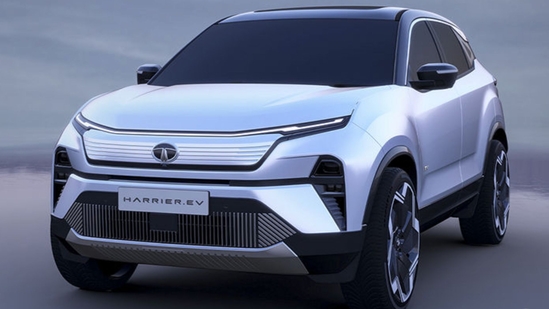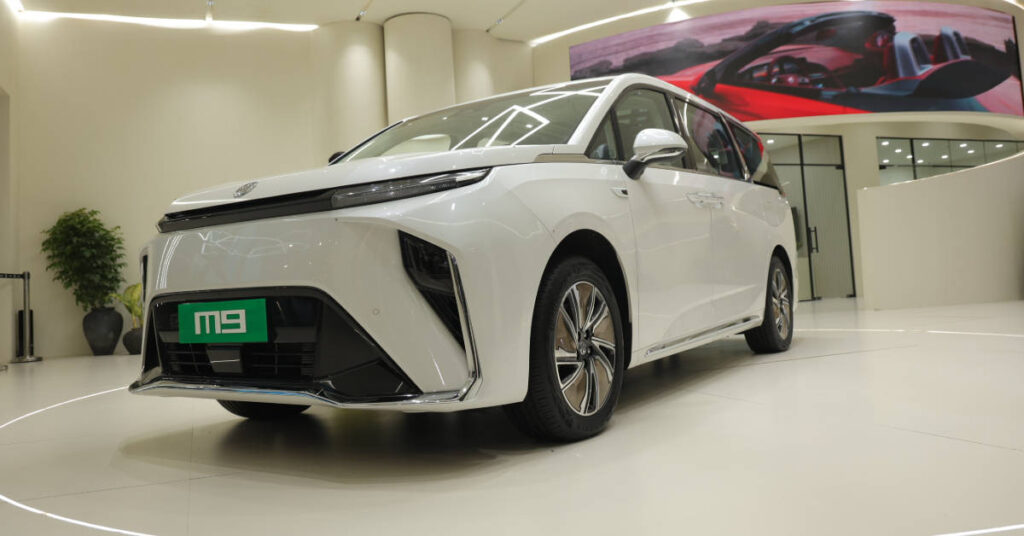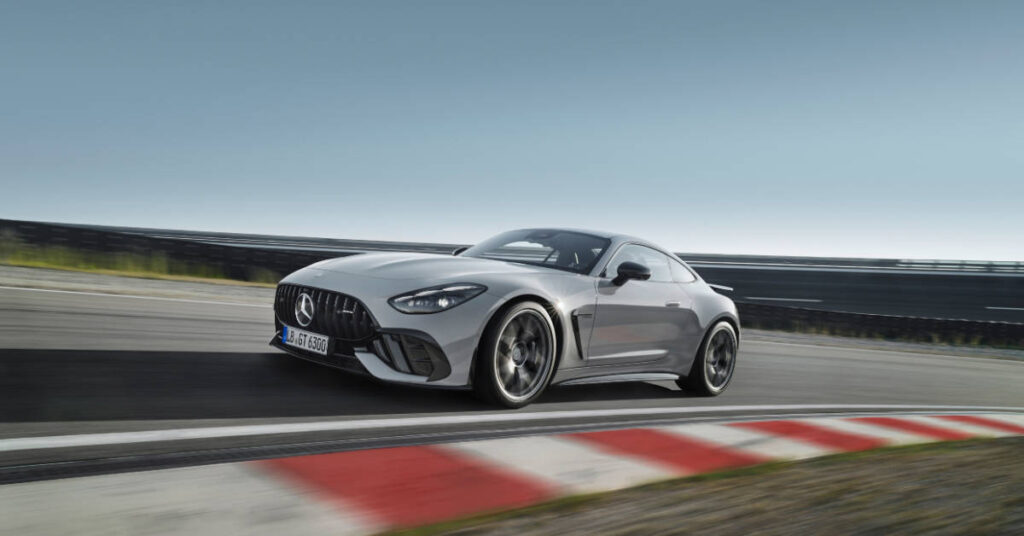June 2025 is poised to be an exhilarating month for India’s automotive enthusiasts, with a lineup of premium electric vehicles (EVs) and high-performance luxury models set to hit the market. Following a wave of mass-market launches in May 2025, such as the Kia Carens Clavis and the facelifted Tata Altroz, this month shifts focus to premium offerings. Tata Motors will unveil its flagship Tata Harrier EV, while MG Motor introduces the sporty Cyberster and luxurious M9 MPV. Mercedes-Benz will bolster its AMG portfolio with the India-exclusive G 63 Collector’s Edition and the return of the GT 63 and GT 63 Pro. This article provides an in-depth analysis of these launches, evaluating their real-world performance, offering unique insights, and predicting their impact on India’s evolving automotive market.
Tata Harrier EV
Launch Date: June 3, 2025
Expected Price: ₹24–30 lakh (ex-showroom)
Source: CarDekho, Autocar India, Tata Motors

Overview
The Tata Harrier EV, launching on June 3, 2025, marks Tata Motors’ entry into the premium electric SUV segment. First showcased as a concept at Auto Expo 2023 and in production-ready form at the Bharat Mobility Global Expo 2025, it builds on the Harrier’s rugged design with EV-specific enhancements. Built on the Acti.ev platform—a modified version of the Land Rover-derived OMEGA architecture—it offers a dual-motor all-wheel-drive (AWD) setup and a claimed range of over 500 km.
Design and Features
The Harrier EV retains the Harrier’s bold silhouette, with a sealed grille, connected LED DRLs, aero-optimized 18-inch alloy wheels, and a redesigned bumper with vertical slats. The “.ev” badge on the doors distinguishes it from its ICE counterpart. The interior mirrors the Harrier’s layout, featuring a 12.3-inch touchscreen infotainment system, a 10.25-inch digital driver’s display, a panoramic sunroof, and a 10-speaker JBL audio system. Unique EV features include a summon mode, vehicle-to-load (V2L), and vehicle-to-vehicle (V2V) charging. Safety is robust, with seven airbags, a 360-degree camera, front/rear parking sensors, and Level-2 ADAS (adaptive cruise control, lane-keeping assist, autonomous emergency braking).
Specifications
- Powertrain: Dual-motor AWD, producing up to 500 Nm torque
- Battery: Expected 60 kWh, delivering a 500+ km range (C75 test cycle)
- Charging: Supports DC fast charging (details TBD)
- Suspension: Multi-link rear suspension for improved ride quality
- Features: Panoramic sunroof, connected car tech, OTA updates, terrain modes (Rock Crawl, Snow)
Real-World Performance
Urban Driving: In cities like Bengaluru or Delhi, the Harrier EV’s compact dimensions (4,598 mm length, 1,894 mm width) and AWD setup ensure agility in traffic and stability on uneven roads. The 500 km range covers a week’s commute (50 km daily) without recharging, with regenerative braking enhancing efficiency in stop-and-go conditions. The summon mode simplifies parking in tight spaces, while the 360-degree camera aids navigation. However, the lack of confirmed charging speeds may concern buyers in areas with limited fast-charging infrastructure.
Highway Commutes: On routes like the Mumbai-Pune Expressway, the Harrier EV’s 500 Nm torque delivers confident acceleration for overtaking. The multi-link rear suspension improves ride comfort over the ICE Harrier’s torsion beam setup, though the 1,894 mm width may feel bulky on narrow highways. The 500 km range supports a 300 km round trip, but charging infrastructure availability remains critical for long journeys.
Insight and Market Impact
The Harrier EV’s AWD and off-road features (e.g., Rock Crawl mode) position it as a versatile SUV for urban and adventure-seeking buyers. Priced at ₹24–30 lakh, it competes with the Mahindra XEV 9e (₹21.90 lakh), Hyundai Creta Electric (₹20–25 lakh), and MG ZS EV (₹18.98–25.20 lakh). Tata’s 5-star GNCAP-rated platform and 2 lakh EV sales milestone bolster its credibility. With India’s EV market growing at a 44.5% CAGR, the Harrier EV could sell 30,000 units annually by 2027, especially in EV-friendly states like Karnataka and Tamil Nadu. However, Tata must address charging infrastructure concerns through partnerships with providers like Tata Power to ensure widespread adoption.
MG Cyberster
Launch Date: Expected June 2025
Expected Price: ₹50–60 lakh (ex-showroom)
Source: CarDekho, Zee News

Overview
The MG Cyberster, a two-door electric roadster showcased at Auto Expo 2025, brings sporty flair to India’s EV market. With its scissor doors and sleek design, it targets enthusiasts seeking a premium, performance-oriented EV. Expected to launch via the CBU route, it offers a blend of style and performance.
Design and Features
The Cyberster features LED headlights with petal-like DRLs, a black lower grille, 20-inch dual-tone alloy wheels, and arrow-shaped LED taillights connected by a lightbar. The scissor doors are a standout, potentially making it the most affordable car in India with this feature. The futuristic cabin includes triple screens (two 7-inch displays and a 10.25-inch touchscreen), a driver-centric dashboard, and an 8-speaker Bose audio system. Features include 6-way electrically adjustable heated seats, an electrically foldable roof, and a Level-2 ADAS suite (adaptive cruise control, active emergency braking).
Specifications
- Powertrain: Dual-motor AWD, 510 PS, 725 Nm
- Battery: 77 kWh, offering a 443 km WLTP range
- Performance: 0–100 kmph in ~3.5 seconds
- Features: TPMS, connected car tech, wireless Apple CarPlay/Android Auto
Real-World Performance
Urban Driving: In cities like Mumbai, the Cyberster’s compact 4,533 mm length and low 1,329 mm height ensure nimble handling in traffic. The 443 km range supports a week’s urban commute, though the convertible roof may be less practical in monsoons. The scissor doors attract attention but may complicate parking in tight spaces.
Highway Commutes: On highways like the Delhi-Jaipur Expressway, the 510 PS output delivers exhilarating acceleration, with the AWD system ensuring stability at high speeds. The 443 km range supports a 300 km trip, but fast-charging availability is crucial. The low ground clearance (estimated 130 mm) may struggle on uneven roads.
Insight and Market Impact
The Cyberster’s ₹50–60 lakh price positions it against the Porsche 718 Boxster (₹1.48 crore), offering a more accessible open-top EV. Its unique scissor doors and sporty design appeal to affluent buyers in metros like Delhi and Bangalore. However, its niche roadster segment and high price may limit sales to 2,000–3,000 units annually. MG’s battery rental scheme could lower upfront costs, boosting appeal. The Cyberster could redefine MG’s brand image in India, paving the way for more premium EVs like the M9.
MG M9
Launch Date: Expected June 2025
Expected Price: ₹70–80 lakh (ex-showroom)
Source: CarDekho, Autocar India

Overview
The MG M9, a rebadged Maxus Mifa 9, is a premium electric MPV expected to launch via the CKD route. Showcased at the Bharat Mobility Global Expo 2025, it targets luxury buyers seeking spacious, eco-friendly transport, competing with the Toyota Vellfire and Kia Carnival.
Design and Features
The M9 sports a boxy silhouette with projector LED headlights, 19-inch aero-optimized alloy wheels, and connected LED taillights. The cabin offers a dual-tone black-and-tan finish, with 6- or 7-seat configurations. Features include a single-pane sunroof (front), a panoramic sunroof (rear), dual digital displays, powered and ventilated seats with massage functions, 3-zone AC, and a Level-2 ADAS suite.
Specifications
- Powertrain: Single front-axle motor (FWD), 244 PS
- Battery: 90 kWh, offering a 400+ km WLTP range
- Features: 360-degree camera, multiple airbags, OTA updates
Real-World Performance
Urban Driving: In cities like Chennai, the M9’s 4,800 mm length and 7-seat layout suit large families or corporate shuttles. The 400 km range supports multi-day commutes, but its size may challenge parking. The ADAS suite and 360-degree camera ease urban navigation.
Highway Commutes: On routes like the Bangalore-Mysore Expressway, the 244 PS motor provides adequate power for cruising, though it lacks the punch of dual-motor EVs. The 400 km range supports a 250 km trip, but charging infrastructure is critical. The plush seats and quiet cabin ensure comfort.
Insight and Market Impact
Priced at ₹70–80 lakh, the M9 competes with the Toyota Vellfire (₹1.32 crore) and Kia Carnival (₹63.90 lakh), offering a lower-cost electric alternative. Its premium features and spacious cabin appeal to luxury shuttle services and affluent families. With India’s MPV market growing at a 10% CAGR, the M9 could sell 5,000 units annually, particularly in metros. MG must ensure competitive financing and after-sales support to challenge established players.
Mercedes-AMG G 63 Collector’s Edition
Launch Date: June 12, 2025
Expected Price: ₹3.5–4 crore (ex-showroom)
Source: CarDekho, Autocar India

Overview
The Mercedes-AMG G 63 Collector’s Edition, launching on June 12, 2025, is an India-exclusive variant developed with Mercedes-Benz India’s R&D team. Inspired by Indian culture, it features unique styling and a premium price over the standard G 63 (₹3.64 crore).
Design and Features
The Collector’s Edition sports a bright orange paint scheme, customized badges, and exclusive 22-inch alloy wheels. The interior features bespoke upholstery, carbon fibre accents, and a Burmester 3D audio system. It retains the G 63’s dual 12.3-inch screens with updated software, augmented reality navigation, and a new AMG steering wheel.
Specifications
- Engine: 4.0-litre twin-turbo V8 mild-hybrid, 585 PS, 850 Nm
- Transmission: 9-speed automatic, AWD
- Performance: 0–100 kmph in 4.5 seconds, top speed 220 kmph
- Features: Active suspension, 360-degree camera, multiple airbags
Real-World Performance
Urban Driving: In Delhi’s congested streets, the G 63’s 4,873 mm length and boxy shape may feel cumbersome, but its 585 PS engine ensures quick escapes from traffic. The active suspension smooths out potholes, and ADAS aids navigation. Fuel efficiency (8–10 kmpl) is a drawback in city conditions.
Highway Commutes: On the Delhi-Agra Expressway, the V8’s power and AWD deliver commanding performance, though the 220 kmph top speed is electronically limited. The luxurious cabin and Burmester audio enhance long drives, but fuel costs are high.
Insight and Market Impact
The G 63 Collector’s Edition’s exclusivity (limited units) and India-inspired design appeal to affluent buyers and celebrities. Priced at ₹3.5–4 crore, it competes with the Land Rover Defender 130 (₹2.85 crore). Its niche appeal may limit sales to 100–150 units, but it strengthens Mercedes’ luxury brand image. Offering customization options could further boost its allure.
Mercedes-AMG GT 63 & GT 63 Pro
Launch Date: June 26, 2025
Expected Price: ₹3–3.5 crore (ex-showroom)
Source: CarDekho, Autocar India, Times of India

Overview
Mercedes-Benz reintroduces the AMG GT nameplate in India with the GT 63 and GT 63 Pro, launching on June 26, 2025. These 2+2 coupes combine grand tourer elegance with track-ready performance, marking the GT’s return since 2020.
Design and Features
The GT 63 and Pro feature a sleek grand tourer design with a long hood, carbon fibre accents, and active aerodynamics (GT 63 Pro). The cabin mirrors the AMG SL 55, with sport seats, a 12.3-inch driver’s display, an 11.9-inch portrait touchscreen, and Nappa leather upholstery. The GT 63 Pro adds track-focused features like enhanced brakes and AMG ACTIVE RIDE CONTROL.
Specifications
- Engine: 4.0-litre twin-turbo V8, 577 PS/800 Nm (GT 63), 612 PS/850 Nm (GT 63 Pro)
- Transmission: 9-speed dual-clutch, AWD
- Performance: 0–100 kmph in 3.2 seconds, top speed 315 kmph (GT 63), 317 kmph (GT 63 Pro)
- Features: Burmester audio, OTA updates, Level-2 ADAS
Real-World Performance
Urban Driving: In Mumbai, the GT 63’s 4,731 mm length and low 1,353 mm height ensure agility, though the 2+2 layout limits practicality. The 577 PS engine is overkill for city traffic, but ADAS and rear-axle steering ease maneuvering. Fuel efficiency (6–8 kmpl) is a concern.
Highway Commutes: On the Mumbai-Pune Expressway, the GT 63 Pro’s 612 PS and active aero deliver blistering performance, with a 0–200 kmph time of 10.9 seconds. The luxurious cabin and Burmester audio make long drives enjoyable, but high fuel costs persist.
Insight and Market Impact
Priced at ₹3–3.5 crore, the GT 63 and Pro compete with the Porsche 911 Carrera 4 GTS (₹2.96 crore). Their 2+2 layout and enhanced practicality broaden their appeal, potentially achieving 200–300 sales annually among India’s elite. The GT 63 Pro’s track-focused upgrades could attract enthusiasts, but Mercedes must ensure service network readiness for these high-performance models.
Conclusion
June 2025 brings a diverse range of vehicles to India, from the Tata Harrier EV’s mass-market appeal to the Mercedes-AMG models’ niche luxury. The Harrier EV could redefine the midsize EV SUV segment with its 500 km range and AWD, while the MG Cyberster and M9 introduce premium electric options in untapped segments. Mercedes’ G 63 Collector’s Edition and GT 63/Pro cater to affluent buyers, reinforcing the brand’s performance legacy. With India’s EV and luxury markets growing rapidly, these launches could sell over 35,000 units combined by 2027, provided infrastructure and after-sales support keep pace. Stay tuned via CarDekho, Autocar India, and Tata/Mercedes’ official channels for updates.
